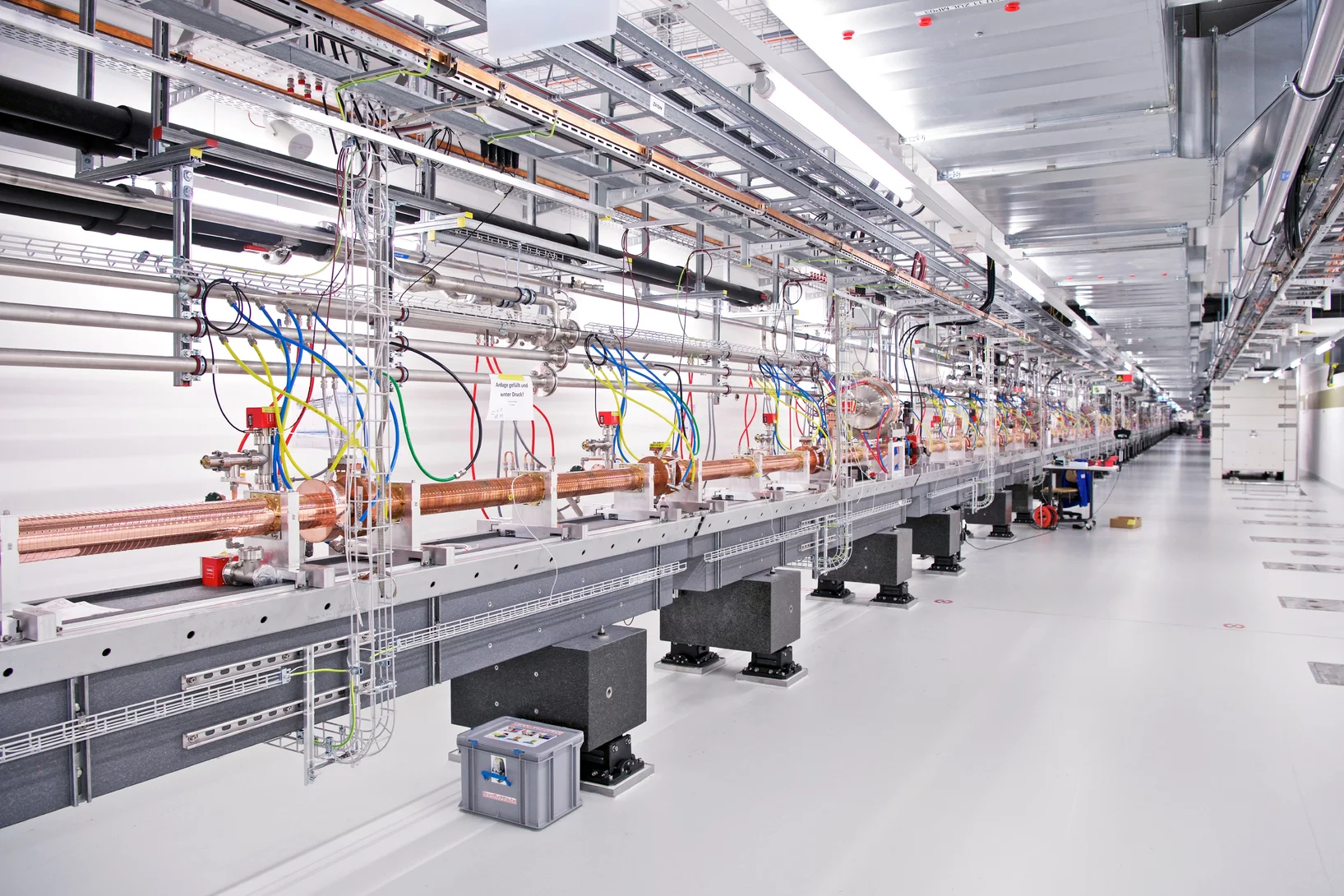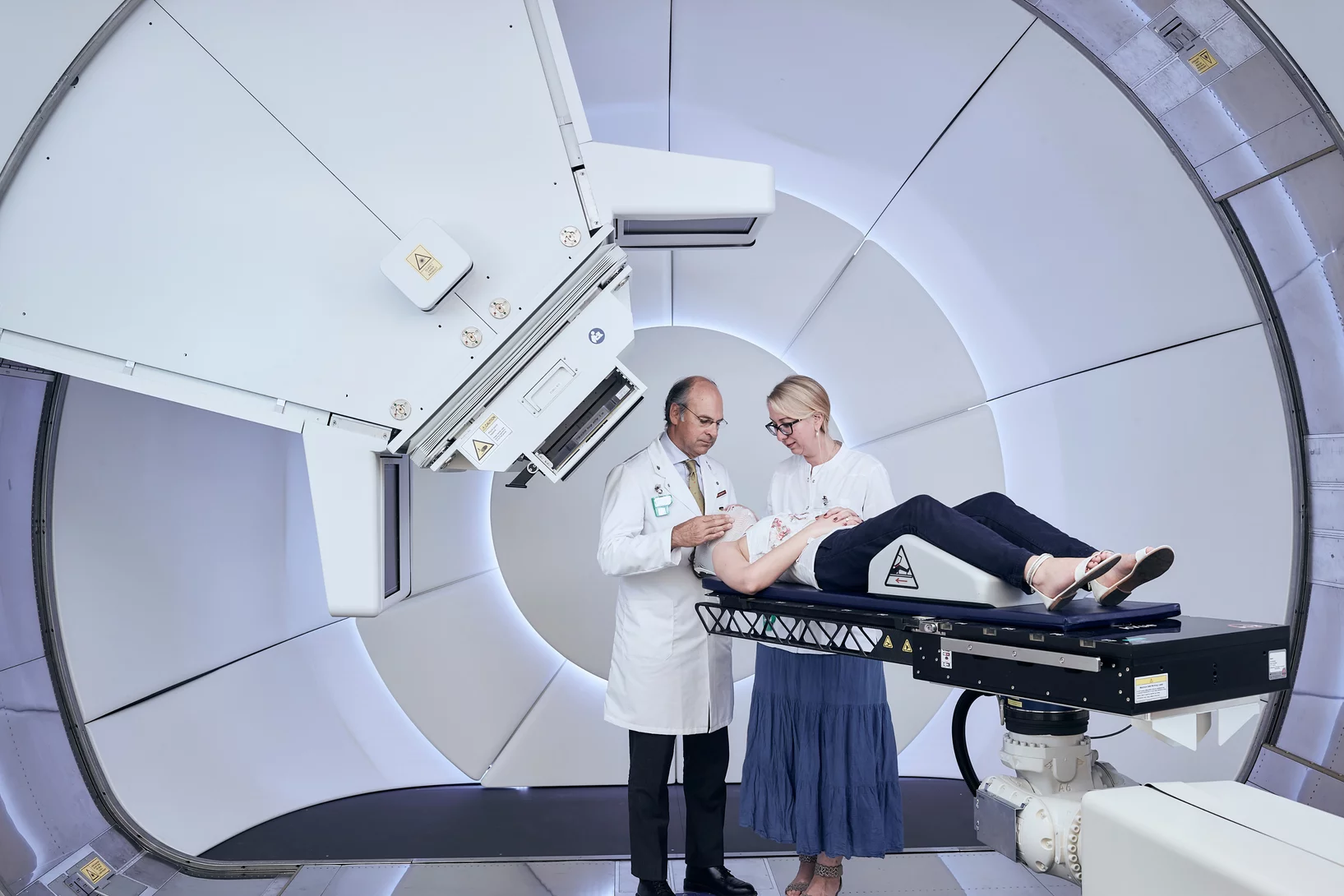At PSI, several projects are dedicated to important research questions concerning the Sars-CoV-2 coronavirus and the resulting diseases. We provide information on activities and projects, for example on investigations of lung tissue, on the production of proteins and antibodies or on ideas for new research on Covid-19.
Useful links
Public Tour Hot Laboratory
Discover the Hot Laboratory nuclear facility during our guided tour, a unique experimental facility in Switzerland for the nuclear technology investigation and analysis of highly radioactive materials. This is supported by a well-developed infrastructure in terms of safety, analysis, and preparation, with unique laboratories at your disposal.
Public Tour of the SwissFEL
The SwissFEL is one of only five X-ray laser facilities worldwide that can generate hard X-rays in laser quality and make them available for research. During our tour, we will learn about the operation and main research objectives of the X-ray laser and then take a guided walk to view the key components of the 700-meter-long facility.
Public Tour Proton Therapy
Proton therapy is a form of radiation therapy used to destroy cancerous tissue with charged particles, specifically protons. Protons are particularly well-suited for this purpose because they deliver their greatest effect deep inside the body, directly within the tumor. At the Proton Therapy Center of PSI, we treat more than 400 patients each year. During our tour, we will introduce you to the treatment rooms and explain PSI’s contributions to the development of proton therapy.
In the flying laboratory
Every year, the National Emergency Operations Centre (NEOC), with the support of PSI, carries out measuring flights to determine the radiological situation in Switzerland.
Spannende Momente vom Nationalen Zukunftstag am PSI
Die nächste Generation von Fachkräften am PSI und hat einen unvergesslichen Zukunftstag erlebt!
Neat, precise and brighter than ever
Researchers at SwissFEL succeed in improving the temporal coherence of XFEL pulses
SμS call for proposals I-25 is still open
The call for SμS proposals I-25 is still open. Submission deadline: 01 December 2024
SINQ call for proposals is closed now
The recent SINQ call I-25 was closed on 15 November 2024. More than 230 new proposals were received.
Exact solution of the classical and quantum Heisenberg mean field spin glasses
We solve and elucidate the physics of quantum Heisenberg spins glasses, which governs the local moments in randomly doped, strongly correlated materials.
PSI and AlphaSYNT: Pioneers on the Path to Sustainable Energy Technologies
AlphaSYNT and PSI are receiving support from the Aargau Cantonal Research Fund to scale up the reactor design to a double-digit MW capacity.
Physiklaborant-Lernender an der U19-Rollhockey WM
Diego G., Lernender Physiklaborant im 3. Lehrjahr, ist leidenschaftlicher Rollhockey-Spieler und schaffte es ins U19-Nationalkader für die Weltmeisterschaft vom 8. bis 14. September in Novara (ITA). Seine Erfahrungen und Eindrücke schildert er im folgenden Bericht.
Taking off with sustainable kerosene
Researchers around the world are working to find and optimise new ways of producing climate-neutral aviation fuel. At PSI, together with industry, they’re exploring a promising approach.
ESA Opens Innovation Center in Switzerland
The European Space Agency (ESA) is launching the "European Space Deep-Tech Innovation Centre" (ESDI) in collaboration with PSI, located in Park Innovaare.
Scientist careers: Weronika Ofierska, participant of CONNECT Round 4, now Lab Specialist at the Gübelin Gem Lab
The CONNECT program fosters exchange between highly qualified and ambitious female scientists and role models working in industry. In addition to direct matches between program participants and partner companies, the program encourages scientists to explore and pursue career options beyond academia. Every year, ca. 35 scientists and 3-4 partner companies, plus the federal administration, sponsors, universities of applied sciences and startups benefit from the program. In today's post, meet Weronika Ofierska who participated in CONNECT Round 4 and got encouraged to move to industry thanks to the program. She tells us about her journey from wanting to gain insights to make an informed decision on her future career, to the ‘girlhood’ and support she experienced, and what she is working on now.
New benchmark helps solve the hardest quantum problems
Quantum many-body problems involve the highly complicated process of predicting the behaviour of many interacting quantum particles. A newly developed benchmark helps to solve these problems.
Tag der Berufe
Mit der Swissmechanic gemeinsam in Lenzburg.
ESA comes to Switzerland
The signing of a contract between the European Space Agency ESA and PSI marks the start of the European Space Deep-Tech Innovation Centre ESDI.
60 years of the Hotlab
Switzerland’s longest-running nuclear facility, located at PSI, is celebrating its anniversary today.
Continuum Excitations in a Spin Supersolid on a Triangular Lattice
Magnetic, thermodynamic, neutron diffraction and inelastic neutron scattering are used to study spin correlations in the easy-axis XXZ triangular lattice magnet K2Co(SeO3)2. Despite the presence of quasi-2D “supersolid” magnetic order, the low-energy excitation spectrum contains no sharp modes and is instead a broad and structured multiparticle continuum. Applying a weak magnetic field ...
Best practices for harnessing operando X-ray absorption spectroscopy in electrocatalytic water splitting studies
X-ray absorption spectroscopy (XAS) has found applications in a range of fields including materials, physics, chemistry, biology and earth science. XAS can probe the local electronic and geometric structure, such as the average oxidation state, coordination environment and interatomic distances, surrounding an element of interest. Thus, XAS is a valuable tool to inform catalyst design by tracking catalyst evolution under operating conditions, for example, via providing dynamic snapshots of the essential information.
Getting to the roots of a global health problem
Imad El Haddad analyses the chemical composition and health impacts of particulate matter at the Center for Energy and Environmental Sciences of the Paul Scherrer Institute PSI.
Technology Briefing: AI in Manufacturing Processes
When: Thursday, November 28, 2024, 13.30 –18.00h
Where: Paul Scherrer Institut, 5232 Villigen PSI, Auditorium (PSI West)
Register today – we look forward to seeing you!
Marius Köppel defends his thesis on the Mu3e Data Acqusistion System
Marius Köppel has defended his PhD on the data acquisition system for Mu3e at Johannes Gutenberg University Mainz.
Russell McKenna and Andreas Pautz on Energy Production in Switzerland
“If we exclude individual measures, it just means that we need more of the others.”
Kagome breaks the rules at record breaking temperatures
Discovery of quantum phenomenon at accessible temperatures could be useful for quantum technologies.
A complex promise
There’s more to climate-neutral aviation than just reducing emissions during flights. A PSI study analyses what is needed to achieve this long-term goal.
"Quantum Magnet Lunch" retreat in Amden
Our "Quantum Magnet Lunch" team - consisting of the QPS group, as well as Markus Müller's team and Gabriel Aeppli - met in Amden to review the ongoing research themes and set the agenda for the coming year.
Reentrant multiple-q magnetic order and a “spin meta-cholesteric” phase in Sr3Fe2O7
Topologically nontrivial magnetic structures such as skyrmion lattices are well known in materials lacking lattice inversion symmetry, where antisymmetric exchange interactions are allowed. Only recently, topological multi-q magnetic textures that spontaneously break the chiral symmetry, for example, three-dimensional hedgehog lattices, were discovered in centrosymmetric compounds, where they are instead driven by frustrated interactions. Here we show that ...
PSI at this year's "Open-i"!
Open-i is Switzerland's leading innovation platform and will be held on November 21 & 22 in Zurich – PSI will be there as a "Science Partner"!
On the way to light-controlled medicine
PSI researchers have elucidated the structure of special photoreceptors.






























